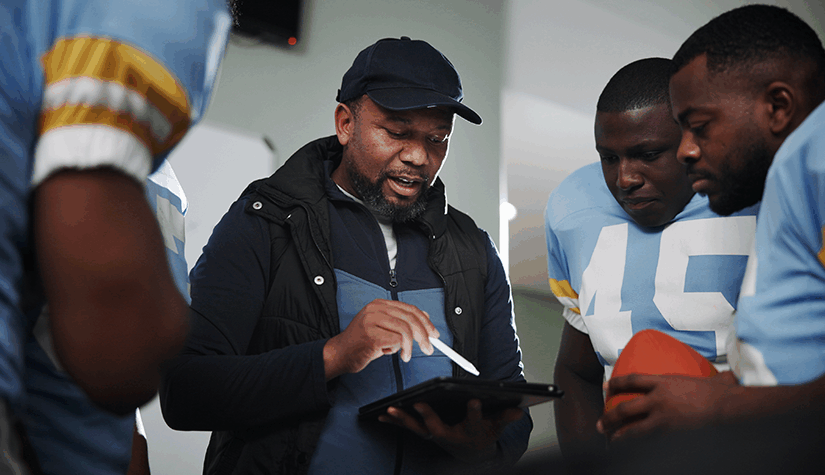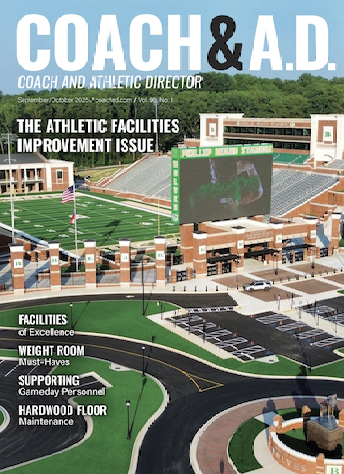How to enhance public school fundraising for athletics
In today’s economy, the current conditions present both challenges and opportunities for the majority of interscholastic directors of athletics as it relates to sports fundraising.
More specifically, public high schools often face several challenges in sports fundraising and alumni outreach compared to private and parochial Catholic schools. These include, but are not limited to, the following five component areas:
 Resource Allocation: Public schools typically have limited budgets and must prioritize essential educational needs over extracurricular activities. This often leaves less funding and fewer resources for developing robust alumni outreach programs.
Resource Allocation: Public schools typically have limited budgets and must prioritize essential educational needs over extracurricular activities. This often leaves less funding and fewer resources for developing robust alumni outreach programs.- Alumni Networks: Private and Catholic schools usually have well-established alumni networks. These schools often emphasize community and long-term relationships, fostering a strong sense of loyalty and engagement among graduates. Public schools, on the other hand, typically do not have the same tradition of alumni involvement.
- Fundraising Expertise: Private and Catholic schools often have dedicated staff or “development” or sometimes called “Advancement” departments focused on fundraising and alumni relations. These professionals are skilled in organizing events, campaigns, and maintaining alumni databases. Public schools, in general, lack such specialized personnel, relying instead on volunteers or overburdened staff.
- Cultural Differences: The culture in private and Catholic schools often includes a strong emphasis on giving back and supporting the school community. This culture is nurtured from an early age, making alumni more likely to contribute financially and participate in fundraising activities.
- Community Support: Private and Catholic schools often have a more cohesive community, including parents, local businesses, and religious organizations, which can provide additional support and resources for fundraising efforts.
- Build a Dedicated Alumni Network:
- Create an Alumni Database — Start by compiling a comprehensive database of alumni, including contact information, graduation years, and current occupations. This can initially and cost-effectively be done using Excel Spreadsheets. On the other hand, a more robust (and costly) type of platform, such as the “Raiser’s Edge”, which is a comprehensive fundraising and relationship management platform developed by Blackbaud. Overall, you must invest money in order to make money. *Engage Early: Begin engaging students before they graduate. Encourage them to join alumni groups and participate in school events.
- Leverage Technology:
- Social Media — Use platforms like Facebook, LinkedIn, and Instagram to connect with alumni and keep them informed about school events and fundraising campaigns.
- Email Campaigns — Regularly send newsletters and updates to keep alumni engaged and informed about how they can contribute.
- Host Events:
-
- Reunions and Homecomings — Organize regular reunions and homecoming events to foster a sense of community and encourage alumni to give back. For example, honor specific “classes of athletes and band members” such as the Class of 1980, the Class of 1990, or the Class of 2000.
- Fundraising Events — Plan events such as auctions, 5-K fun runs, and golf scrambles or fun bowling events that can attract alumni and community members.
- Offer Volunteer Opportunities:
-
- Mentorship Programs — Invite alumni to mentor current students, guiding careers and college applications. *Guest Speakers: Have alumni speak at school events or in classrooms to share their experiences and inspire students.
- Recognize and Appreciate Contributions:
-
- Alumni Awards — Establish awards to recognize outstanding alumni contributions and achievements.
- Public Acknowledgment — Highlight alumni contributions in newsletters, on the school website, and during events.
- Collaborate with Local Businesses:
-
- Sponsorships — Partner with local businesses for event sponsorships and donations.
- Community Events — Involve local businesses in school events to build stronger community ties and support.
- Develop a Strong Fundraising Team:
-
- Hire or Train Staff — Invest in hiring or training staff dedicated to alumni relations and fundraising.
- Parent and Community Volunteers — Engage parents and community members to assist with fundraising efforts.
» ALSO SEE: Creating a culture of continuous professional development
Overall, by implementing these strategies, public schools can significantly enhance their fundraising capabilities and build stronger connections with their alumni. Establishing a dedicated alumni network and leveraging technology for outreach can create a more engaged and supportive community. Hosting events and offering volunteer opportunities can foster a sense of belonging and pride among alumni, encouraging them to give back. Recognizing and appreciating contributions publicly can further motivate alumni and community members to support the school’s initiatives. Collaborating with local businesses can provide additional resources and sponsorships.
By fostering a culture of giving and community support, public schools can create a positive feedback loop where alumni and community members feel valued and invested in the school’s success. This, in turn, benefits their sports programs and the overall school community, leading to improved facilities, opportunities, and experiences for current and future students.





